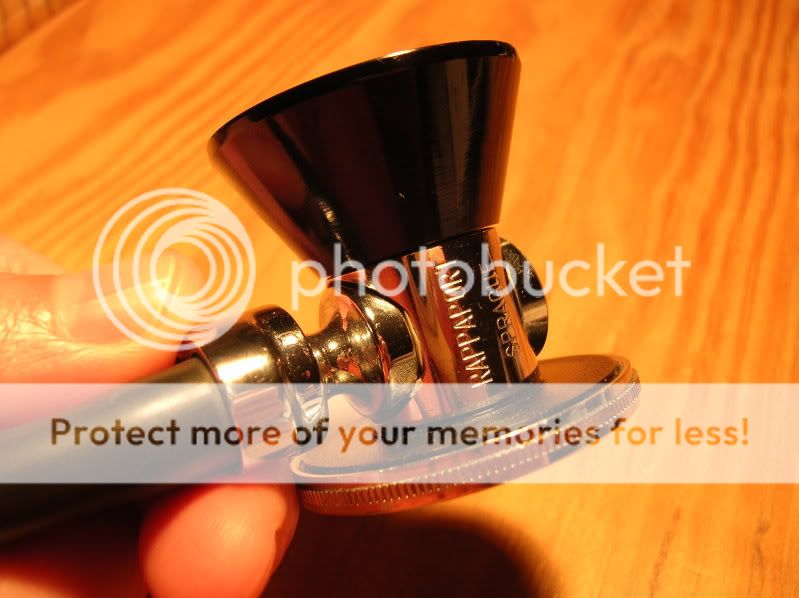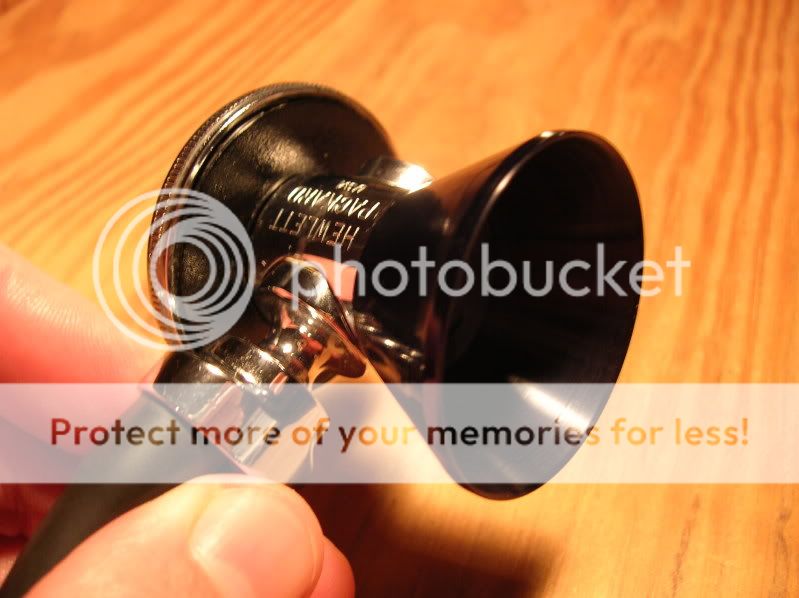- Joined
- Mar 24, 2005
- Messages
- 564
- Reaction score
- 3
What about the Littman Masters II w/ no bell? I'll be an IM intern! 😀
APACHE3 said:What about the Littman Masters II w/ no bell? I'll be an IM intern! 😀
APACHE3 said:You saved me $85 bucks and some embarrassment! thanks! 😀
sacrament said:I'm convinced that my super-cool long tube is dampening anything more subtle than, say, a jet plane taking off inside the patient's chest.
What Is The Optimal Tubing Length For Stethoscopes?
Quite often health care workers raise questions regarding tubing length based on early publications claiming shorter tubing length provides better acoustic response. Some instructors have recommended their students buy the shortest tubing possible. In an attempt to clarify many of the myths surrounding tubing length, 3M Littmann has tested their stethoscope product line to offer the following information about tubing length.
To explain our test results, it will be helpful to compare the tubing of the stethoscope to a garden hose. For example, an increase in the length of a garden hose will decrease the pressure at the end of the hose as a result of frictional and other internal forces. The same effect occurs when the tubing length of a stethoscope is increased. However, in the case of stethoscope tubing, change in length is relatively small; this decrease in acoustic pressure is not detectable by the human ear.
Additionally, as tubing length increases, resonant frequency decreases. Considering this fact, an increase in tubing length provides a better response to the lower frequency sound (an advantage in auscultation). Many heart sounds fall below 150 Hz and are considered low frequency. Because it has been shown that the human ear is least sensitive to low frequency sounds, improved low frequency response is an advantage.
Taking these two factors into account, there is no detectable difference in acoustical performance between stethoscope with shorter tubing vs. that with longer tubing. In fact, there may be some enhancements to low frequency sounds.
When purchasing a stethoscope, the customer needs to consider their own needs and practices. Longer tubing might be more appropriate for people wearing the stethoscope around their neck as it drapes better. The customer's height and arm length should also be a factor to determine optimal tubing length. Many practitioners would like a little more distance from sicker patients while auscultating. Longer tubing also reduces the amount needed to bend over the supine patient which can stress the health care provider's lower back.
Source: http://www.steeles.com/catalog/length.html
APACHE3 said:Well, I have the Littman II SE and as a student it was great, but I was never terribly pimped on my auscultations anyway, so it was fine, but now I see the finer points of audiometry (hz), dual tubing, etc. being discussed and I'm like..whooa. I saw some good deals on ebay. The Welch-Allyn Harvey Elite sounds nice, but its only 25" whereby the Littman cardiology is 27". I'm tall and I'm sure by the end of the day that extra 2" makes a difference!! 😀 But the Welch is $60 cheaper!! 😕
KentW said:So, tell us...how long is it? 😉
Seriously, a couple of inches shouldn't matter (we're still talking stethoscopes here). Here's some info from Littmann:
u_r_my_serenity said:If you are just going to believe what they say about the evidence and their products then do yourself a favor and stay away from drug reps.
retroviridae said:I had one cards attending who had this wicked three bell stethoscope. None of us know what it does (including my cards fellow)
sacrament said:I thought maybe it was just me, but I've had other people try to use mine and they always agree that it's a POS. It's a Littman Cardiology III
Mumpu said:We got Harvey DLXs from our school when we started and the corrugated diaphragm is better than the regular one, but it's horrid in comparison with my Phillips Rappaport-Sprague with a Craddock/Pelham bell.
Mumpu said:It's a very good big-arse bell (as big as the diaphragm in diameter) that can be bought for the R-S.
Mumpu said:Hm, it may be a Colorado-only thing (one of the cards attendings here invented it eons ago). It's a machined aluminum bell with a sharp edge and it's the same diameter as a diaphragm.
KentW said:Try a stethoscope with a true bell and diaphragm rather than Littmann's "tunable" diaphragm, like the Welch-Allyn Harvey Elite. I'd almost guarantee that you'll be able to tell a huge difference.
sacrament said:So I did it, I bought a Harvey Elite off Ebay. Best fifty bucks I've ever spent. Definitely a noticeable difference.
KentW said:Try a stethoscope with a true bell and diaphragm rather than Littmann's "tunable" diaphragm, like the Welch-Allyn Harvey Elite. I'd almost guarantee that you'll be able to tell a huge difference.
BlondeCookie said:Why do people spend so much for the Phillips stethoscope? ... You could get a $20 dollar similar "Phillips-design" with the dual tubing, etc from many reputable places online. Same parts. No difference.
Furrball2 said:Every Littman with the combo peds/adult diaphragm comes with a rubber gasket that replaces the peds diaphragm turning it into a bell.
BlondeCookie said:Phillips makes a new digital scope that is THE thing.
I HAVE tried the Phillips from an older physician. They are fantastic! However, Phillips doesn't hold the patent to the design, at least they don't anymore. So, what's wrong with spending not a whole lot and getting a whole lot. I'm serious. It's the exact same parts. Same quality sound and everything.
Mumpu said:The rubber gasket makes for a largely worthless bell. You need a thin sharp edge on the bell to for it to work correctly which means almost none of the modern stethoscopes have a real one.
Furrball2 said:So leave the original retainer ring for the diaphragm on instead. Although you want a good seal without applying any pressure for a bell. Any applied pressure would turn the skin under the bell into a diaphragm. Eh, whatever it works for me.
BlondeCookie said:What's the purpose of the retainer ring anyway? Is it all superficial, so the patient doesn't get the cold chill of a metal thing touching their body?
Mumpu said:I'm not claiming it to be the awesomest thing eVaR but it is much better than the stock R-S bell. Like I said, it was designed by a CU faculty member and they probably never bothered to do a huge marketing campaign. I can always tell a CU grad because the hardcore ones always have the R-S with that bell. 😛


KentW said:OK, I finally got the Craddock-Pelham bell. ....
Bike on a Trek said:Just make sure you practice, and occasionally validate your colleague's "ears" against your own
http://archinte.ama-assn.org/cgi/co...el&searchid=1&FIRSTINDEX=0&resourcetype=HWCIT
KentW said:I don't subscribe to the Archives of Internal Medicine. What is it you were trying to tell me by posting that link?
Related to any of these?
http://casesblog.blogspot.com/2006/03/is-physical-examination-useless.html
http://www.medpagetoday.com/Cardiology/Arrhythmias/tb/2944?pfc=101&spc=230
